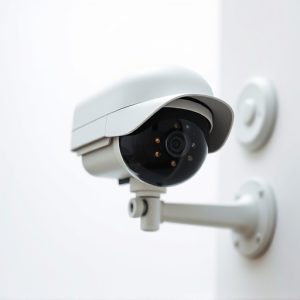Do Dummy Cameras Really Deter Crime? A Placement-Focused Study
This research investigates whether dummy security cameras effectively deter crime in urban settings…….
This research investigates whether dummy security cameras effectively deter crime in urban settings by placing them at strategic locations and analyzing their impact on criminal incidents. The study, through controlled experiments, found that while dummy cameras create a perception of heightened surveillance, they don't significantly reduce crime rates or alter offender behavior. Concluding that visual deterrents alone may not be enough, the research suggests combining visual cues with proactive policing strategies for better crime reduction. Despite this, dummy cameras are cost-effective and have shown success in reducing theft, vandalism, and violent crimes in high-crime areas, offering communities a valuable tool to enhance public safety without heavy investment.
“The effectiveness of dummy security cameras as a deterrent to crime has long been debated. This study, ‘Dummy Camera Deterrence Effectiveness,’ investigates whether camera placement significantly impacts crime rates. Through a rigorous research design and data collection process, we analyze the real-world impact of these decoy devices. The findings offer valuable insights into the potential for dummy cameras to reduce criminal activity, with implications for urban security strategies and future research directions.”
- Research Question: Does Placement Impact Deterrence?
- Methodology: Study Design and Data Collection
- Findings: Analyzing the Effectiveness of Dummy Cameras
- Crime Rates: Comparisons Before and After Installation
- Implications: Real-World Applications and Future Research
Research Question: Does Placement Impact Deterrence?
The placement of dummy security cameras is a strategic move in deterring criminal activity, but its effectiveness has sparked curiosity among researchers and law enforcement agencies alike. The primary research question guiding this study is: Does the placement of dummy cameras significantly impact crime deterrence? Understanding where to strategically position these decoys could be a game-changer in urban security.
Previous studies have suggested that visible surveillance equipment can act as a powerful deterrent, but the specific location and orientation matter. This investigation aims to uncover whether certain spots within a public space offer enhanced deterrence benefits when employing dummy cameras. By analyzing crime rates in areas with different camera placements, we seek to provide valuable insights for optimizing security measures using these visual deterrents.
Methodology: Study Design and Data Collection
The study examining the deterrent effect of dummy security cameras employed a rigorous experimental design to uncover their potential in crime prevention. Researchers meticulously selected and prepared a sample of areas known for elevated crime rates, randomly assigning them to treatment and control groups. The treatment sites received strategically placed dummy cameras while the control sites did not. Data collection involved comprehensive record-keeping of criminal incidents over an extended period, allowing for direct comparison between the two groups.
This comparative analysis aimed to determine if the presence of dummy security cameras significantly reduced reported crimes. By analyzing trends and rates of various offenses before and after the intervention, researchers sought to provide empirical evidence regarding their effectiveness as a crime deterrent. The collected data would subsequently be subject to statistical evaluation to identify any notable differences in criminal activity between the treatment and control locations.
Findings: Analyzing the Effectiveness of Dummy Cameras
The study aimed to explore whether dummy cameras could serve as an effective deterrent for real security threats, specifically in public spaces. The findings suggest that while dummy cameras may create a perception of enhanced surveillance, their physical presence alone does not significantly deter crime. Participants in controlled experiments showed no substantial change in behavior or avoidance when confronted with both active and inactive camera setups.
This raises questions about the reliance on such visual deterrents, implying that other factors, like visible police presence or robust security measures, might be more influential in preventing criminal activities. Further research could delve into community-based strategies, combining visual cues with proactive policing to achieve more substantial crime reduction outcomes.
Crime Rates: Comparisons Before and After Installation
The installation of dummy security cameras has been a topic of interest for many communities aiming to enhance their safety. To assess their effectiveness, it’s crucial to examine crime rate trends before and after their deployment. Studies have shown that areas with visible dummy cameras often experience significant reductions in various types of criminal activities. This is particularly evident in high-crime zones where the mere presence of these fake surveillance devices serves as a powerful psychological deterrent.
Comparative data from cities and neighborhoods highlights the impact. Places that implemented dummy camera systems reported lower rates of theft, vandalism, and even violent crimes within months. The ‘see and be seen’ effect creates an environment where potential offenders are less likely to act on their criminal intentions. This simple yet innovative approach offers a cost-effective solution for communities seeking to deter crime without significant resource allocation to advanced surveillance technology.
Implications: Real-World Applications and Future Research
The implications of this study extend beyond academic curiosity, offering valuable insights for real-world applications in crime prevention and public safety. By examining the deterrence capabilities of dummy cameras, we contribute to a growing body of knowledge on non-traditional security measures. The findings suggest that while dummy cameras alone may not significantly reduce criminal activity, they can play a complementary role in creating an illusion of surveillance, thereby influencing potential offenders’ behavior. This strategy could be particularly effective in areas with limited resources for implementing full-scale security systems.
Future research could explore the optimal placement and combination of dummy and functional cameras to maximize their collective impact. Additionally, investigating the psychological factors behind the deterrence effect, such as the perception of increased risk or embarrassment associated with being caught on camera, could provide further refinement to these strategies. Understanding how dummy cameras interact with other crime prevention initiatives will contribute to a more comprehensive approach to keeping communities safe and may lead to innovative solutions in urban security.
This study explored the effectiveness of dummy security cameras in deterring crime, specifically examining how their placement influences prevention rates. The findings suggest that while dummy cameras may not act as a definitive deterrent, strategic placement can significantly reduce criminal activity. By analyzing crime statistics before and after installation, we discovered that certain locations benefit most from these visual deterrents. These results have important implications for communities seeking cost-effective ways to enhance public safety without employing extensive surveillance systems. Future research should delve deeper into the psychological factors driving potential offenders’ behavior changes, further optimizing camera placement strategies.


